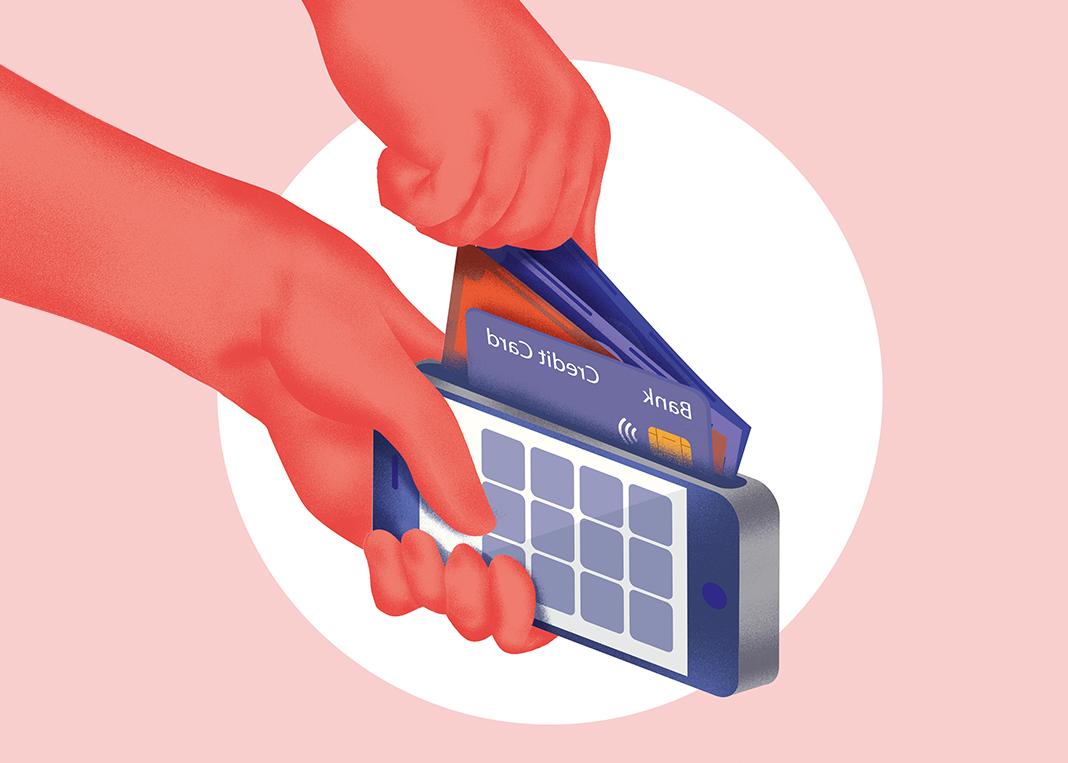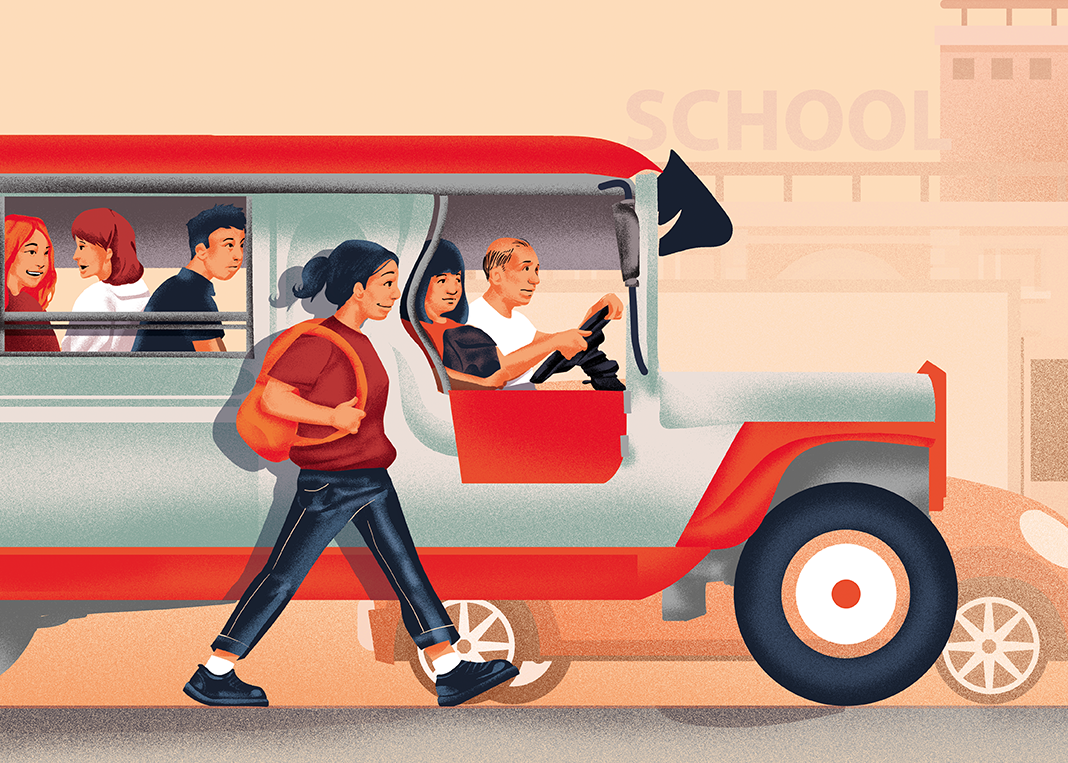Starting a new chapter of your life is scary enough without having to worry about all the little details. Even though college is a memory for us here at Gadgets, we’ve put together a little guide to help those of you who are just about to start this leg of their journey. From what you need, all the way to where you’re staying, and how to keep your finances in order, We’ve tried to come up with a comprehensive guide, so your time at the university can be something you can breeze right through. Start taking notes, class is about to begin!
Looking for a second home

Moving up a rung on the ladder of education can be a daunting enough experience on its own, without having to worry about moving to a new place. Should your childhood home be too far away from school to be a practical daily commute, you’ll have to find a new place to hang your hat. There are a lot of factors to consider when picking your potential home for potentially your entire college stay, and some are less obvious than others. Let’s take a quick look at some of the things you might miss during the search. Things such as location, cost, and space are obvious, and should be considered outright. Some others are a little less obvious considerations, but are important nonetheless, so let’s jump right in.
The age of the building
While you might find a room that has been recently renovated, with great amenities, that is furnished, and at a great location, something to consider is the age of the entire building itself. Now, age isn’t necessarily a dealbreaker, but it’s definitely a factor. Amenities in the building of course age with the rest of it, and if the property manager can’t stay on top of maintenance of the shared facilities, getting home is going to be more stressful than it is relaxing. All other things being equal, a newer building is going to give you a better experience.
Amenities
Home should be a place to relax, and some things are going to make relaxing much easier. Amenities in the unit you’re staying at, as well as in the building the unit is located are great bonuses that you should take into account, and use frequently. Even some of the more spartan dorms or condominiums will have a gym, and it’s been proven time and again that general well-being and mental performance can be boosted by regular exercise. If you’re something of a water baby, a pool is a great thing to have, and can be a bonus when you want to have a little fun with friends. Depending on where you go, there can also be theater or conference rooms, which are significantly more convenient than cramming several classmates in a small condo unit to complete group assignments, or entertainment rooms with various distractions when you need a little breather. Access to a printer, perhaps through a nicely equipped meeting room, would also be a huge bonus.
As for the unit itself, it should have all the basics covered. A stove, a fridge, hopefully an air conditioner, and a bed. Extras such as water heater, maybe a TV, and an Internet connection (more on that later) are superb additions that should merit extra consideration, but not necessary if you have a good deal already anyway.
Security (including fire and earthquake)
Home is a place where you should be able to let your guard down. After a long day of exams and lectures, you really don’t want to go home to a place where you are in fear of having your things stolen while you grab some well-deserved shuteye. Guards, secure, double locks, and hallway cameras are all signs of a home. A quick side tip: try to get along with the guards. They’re just people doing their job, and you do put your security in their hands. A quick conversation, maybe a snack or a coffee might help them do their job a little better, and who doesn’t appreciate a nice gesture now and again.
Disaster security is a big factor as well. Making sure your potential abode has a plan for fires, earthquakes, or other disasters helps you sleep better at night, and offers better odds should your fortunes take a sudden down turn.
Laundry
You need to do laundry. It’s inevitable. Unless you’re fond of wearing swimwear in lieu of underwear, you’re going to want to stay on top of laundry. Having a washing machine inside your unit would be great, but space constraints might not allow this. Laundry places that allow you to drop your clothing off and pick it up at a later date work ok as well, as long as you have decent clothing management skills, and enough items to carry you over until your next batch arrives. Having lived away from home myself, I found that the most attractive option was to be within (laden) walking distance to a self-service laundry place. A few bucks, a little time, and a pack of soap, and you can have a whole week’s worth of clothes ready. It’s fantastic.
A proper internet connection
Lots of places will come with an internet connection, and that’s how it should be. It’s a human right. You might be tempted to rely on a mobile connection, or a pocket wifi device, and while they might work, it’s really not the best way to get online. Check whatever internet connection is provided, and see if it suits your needs. If it happens that you have a token connection that just barely passes the definition of going online, we implore you to apply for a better one. It’ll save you late-night frustration when you’re trying to get work done in a hurry, and keep you from going insane waiting for your next show to buffer. We can’t emphasize this enough. Get a good internet connection.
Storage
Something that’s often overlooked is storage. You’re likely not going to be moving in with a whole lot of stuff, but trust us when we say four years of accumulated possessions will add up. You could fall back on giant storage bins, but they’re not the most attractive way to keep house, and add clutter in a space you ideally want to keep neat, for the sake of your sanity. While some may argue that additional storage will just invite more stuff to accumulate, the extra storage will prove useful regardless–just try your best not to hoard.
The Property Manager
The property manager is the person in charge of the daily goings-on of the building you’re in. An efficient, effective property manager will keep the building running smoothly, which is something that’s supremely important in a place you might be living in for the next four or so years. Take a moment to speak with the property manager, so you can get an idea as to how they are. You will want someone who is helpful, patient, and generally someone you’ll want to deal with should the need arise. A few minutes of conversation will make your life a lot easier in the long run.
These are just a few ideas you will want to consider when picking a place. Remember to take these into account, don’t forget the basics such as location, cost, and size, and you should be all set!
In Pursuit of School Gear

More often than not, a trip to the mall weeks before the new school year starts is a daunting experience. People are rushing in to get in line at the cashier, holding their baskets full of school supplies, shoes, and apparel. But apart from these school essentials, and the tuition that most parents prepare for in their annual budget, they also need to spend some extra money on gadgets that will help their child ace every subject. College education is demanding physically, mentally, and emotionally. And to stay on top, every student will need to have ammunition ready for the nerve-wracking homework and exams ahead. Here are the things that you should consider when looking for the right school gear.
Know your needs
Before going into the war zone, you need to form a strategic plan. Every college student should determine their needs by writing a shopping list. First, indicate the school supplies that you have to use for the whole school year. Yellow pad, binder notebook, ballpens, and a bag are the default essentials that should be on the top list. After that, narrow down the list with the gadgets that will help you in your everyday life at the university. Courses which focus on content creation and 3D rendering such as multimedia arts, film, communication arts, journalism, architecture, interior design, and engineering need specific tool for some of their subjects. It will be practical to invest on a good brand with an average price, most especially if it will be used regularly.
Specifications
Now that you know the things to put in your school bag, the next thing that you should consider in buying electronics are specifications. For those who aren’t into technology, understanding hardware can be a bit difficult. But with the right knowledge, you’ll be able to see the light and pick the right brand for your needs. So if you’re looking for anything that has to deal with electronics, Quezon City’s very own Gilmore is the destination to go. You can also schedule a trip to malls or visit authorized dealers nationwide for convenience.
Computing machines
Let’s start with the most generic gadgets that most college students rely on—laptops. Whether its for accomplishing paper work or producing content, you will need to have a laptop with a fast and large memory for running hefty software. For creatives, we highly recommend laptops powered by, at least, an 8th generation Intel Core i5 processor or an AMD Ryzen 5 1600 matched with either a 2 TB or 4 TB hard drive. A hybrid storage system consisting of hard drives and solid state drives are the best choice for faster boot-up time and running software like Adobe Creative Suite. But if you’re running out of budget, you can just upgrade the memory of your previous laptop through authorized service centers. Gaming laptops, which have a higher RAM that improve processing power, are perfect match for rendering 3D models from AutoCAD and animations from Autodesk Maya. For those who want to shell out more, slim computing machines like the 13.3-inch Mi Laptop Air and MacBook Pro hit the best of both worlds. However, there’s the student-friendly Chromebooks from Acer and Asus should you want to have a lightweight laptop for web surfing and multi-tasking. Some brands offer special bundles during back-to-school season, and most of them offer freebies that range from laptop bags to inkjet printers with continuous ink system for efficiency.
Smartphones
There are only four factors that matter the most when it comes to mobile phones—the memory space, image quality, screen size, and battery life. Smartphones have become our personal virtual assistants that we rely on for our productivity. Most college students pre-load their smartphones with a handful of useful apps for note-taking, monitoring their finances, and creating content, and for this reason, they would need to have a phone with at least 64 GB of internal memory paired with 4 GB RAM for storing app patches and important files like their digital lectures. And since there are some professors who still stick to the traditional ways of teaching, having a smartphone equipped with either a dual or triple camera system can make a difference in capturing important concepts and ideas written on the board.
Should you want to take photos with punchy colors and clearer details, mid-ranger phones from Huawei, Samsung, Xiaomi, Oppo, and Vivo offer from 16-megapixel to 48-megapixel advanced rear and front cameras backed up with AI technology. Through auto-scene detection, these smartphones can automatically adjust the camera settings which deliver IG-worthy photos even in poor lighting conditions. To top it off, large screen size and battery life contribute a lot to the performance of the mobile device. If you’re into gaming and binge-watching content, you should choose phones protected by Corning Gorilla Glass to keep it from unwanted scratches and accidental drops, with a display size of 5.5-inch or more, and a minimum battery capacity of 3,500 to 4,000 mAh integrated with fast-charging features. Pocophone F1, Realme C2, Realme 3 Pro, Vivo V15, and Oppo F11 are just some of the
entry-level and mid-ranger phones that students should watch out for.
Mirrorless cameras
Cameras are one of the pieces of equipment that Fine Arts and Mass Communication students use. These are DSLRs and mirrorless cameras which differ most likely in size, as well as image processing and video recording. If you want a compact camera that delivers the same quality as DSLRs and can be easily lugged inside your bag, then mirrorless cameras from Fujifilm and Sony should be in your shooting arsenal. Most of their products record in 4K resolution up to 60 fps, and comes with a
15-45 mm kit lens, built-in stabilization, autofocus capabilities, wide dynamic range and expandable ISO sensitivity up to 51200. Although most of their entry-level products don’t come with electronic viewfinders and built-in flash, these brands continue to develop more technologies that they can add to their future cameras. Should you want to find budget-friendly and secondhand cameras, you may visit the famous Hidalgo Street in Manila. Who knows, you might find cheap deals and big discounts from camera bodies and lenses to accessories.
Bags
Now that the rainy days are about to come, students should invest in water-repellant, anti-theft, durable, and laptop-friendly bags. Whether it’s made of canvas or leather, we prefer backpacks and messenger bags with padded straps and specific compartments for your gadgets to ensure their protection against other sharp object like ballpoint and gel pens. Brands that you should look for are PacSafe, Jansport, Herschel, Outdoor, and Hawk. Always opt for neutral colors like black, grey, and nude so that it could be easily matched to any outfit.
Mobile wallet for payments, remittance, and bank transfer

Gone are the days when students have to wait for days, or even weeks, to receive monthly allowance or money for tuition. Once upon a time, parents, who are miles away from their children, had to rely on financial services that either need bank clearance or a certain amount of days to be withdrawn or claimed.
Technological innovations, especially the advent of mobile apps, have made various financial transactions such as money transfer so much easier and almost instantaneous. People are slowly discovering the convenience of cashless shopping and paying using their smartphones.
There are several payment apps available for use today. Many of them cite Bangko Sentral ng Pilipinas’ call to pursue financial inclusion of the unbanked and underserved sector of society, many of whom live in far-flung areas where there are no banks at all.
While independent statistics of cashless payment adoption in the Philippines are scarce, the visibility of QR Codes and mobile payment lanes in department stores, supermarkets, and even mom-and-pop shops, are proof that many Filipinos are embracing, albeit slowly, the ease of mobile payments.
However, GCash recently reported that it reached 50,000 QR merchant mark in the first quarter of 2019. PayMaya, on the other hand, said in news reports in 2018, that it is looking at increasing its user base to 30 million by next year.
The apps, the cards
In terms of top-of-mind recall, GCash and Paymaya are among the top mobile payment apps people are familiar with today. However, beep, a card used for paying for rapid transit fares, is now evolving to a smart card introducing other services outside transportation. Ride-hailing app Grab has been aggressively pushing users to utilize its GrabPay features. Then there are Coinsph, Okto, and the eldest in the bunch, PayPal.
These apps are available for download from the App Store or Google Play. Most of the time, registration is a breeze with users asked to provide basic personal information. Once installed, it, of course, needs a load to use. Some apps offer bank-to-app money transfer while many of them have partnered with various merchants and establishments to act as loading stations.
Parents who live, say somewhere in the southern Philippines, can look for 24-hour convenience stores that offer reloading services.
While these are mostly app-based payments, a number of them give users physical cards that are widely accepted nationwide. These can be used for cash withdrawal through bank ATMs or as debit cards. Just link the physical cards to the app to monitor transactions.
Easy payments
These mobile payment apps’ services are not limited to online or in-store purchases. These can also be used for bills payments eliminating the hassle of spending time and queueing at payment centers.
Students can use the app to load for telco services. Almost all of these apps offer load purchase or transfer.
Most partner-merchants have installed QR codes conspicuously located in payment counters. By logging on to the app, there’s a feature that asks users to just scan the QR code and input the exact amount.
Several e-commerce sites are now accepting prepaid cards instead of credit cards for payments. Parents who want to send gifts to their children or vice versa can do so using these payment services. They can also send food to their kids even if they are away .
Parents can also book their kids’ flight back home online even without credit cards.
Security
While these financial services apps offer convenience, there is still the question of security with transactions done over the cloud. All of the apps require passwords to log in and users can use all the services they need. The others are becoming more careful, requiring either two-factor authentication or asking for additional passwords before completing a transaction.
For security purposes, banks that offer online services advise their clients to constantly change their passwords and make them more complicated so cybercriminals would have a hard time hacking their accounts. Other devices offer a fingerprint sensor to be able to unlock accounts on smartphones or tablets.
Maybe one of the best things to do to secure accounts and enjoy the convenience of mobile wallets is never sharing passwords to anyone and be discreet when entering them in public places.
Technology has made it way easier for society to function these days. Almost everything is at their fingertips. Mobile wallet and app payments are just a few of the innovations that have made financial transactions simple, moving toward financial inclusion nationwide.
Bank to app to bank
These mobile payments apps are expanding their financial services from just payments to bank transfer. Recently, several of these apps have started offering bank transfers. For a while, the transaction fee was waived. In emergencies, parents can send money to their kids’ bank accounts even in the dead of the night, weekends, or holidays even if they are in other places or countries.
When sending their kids money for tuition, parents can use the app and the child can withdraw it using the physical card from any ATM it is accepted.
Others are also now offering credit or loans to help small and medium enterprises. Along with other services, these fintech companies also offer loans for individuals who need it for personal purposes. They promise hassle-free and quick approval based on credit scores.
Also published in GADGETS MAGAZINE June 2019 Issue
